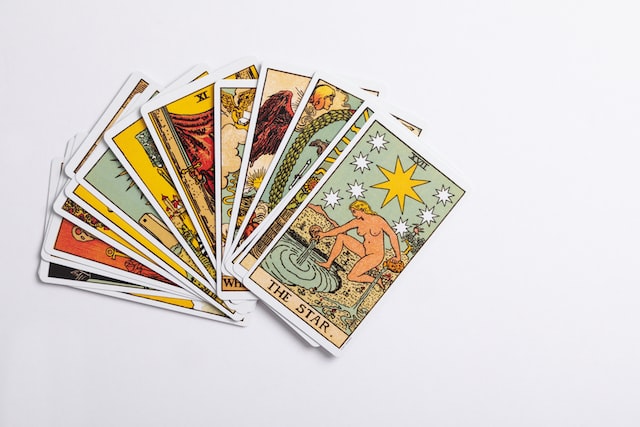The history of tarot cards may surprise you. Before you dive into your first spread, learn how these intriguing cards evolved over time.
The Start of Tarot Cards
Before today’s tarot spreads, tarot cards underwent a fascinating transformation. History begins with a popular game rather than a tool for forecasting the future. Tarot cards emerged in a different form way back in the 15th century. Then, a 70-card game called “Trionfi”—complete with hand-painted drawings and gilded decorations—gained popularity. A character known as the fool was added to the deck during the 16th century, and “trionfi” became “tarocho” in Italy. In France, the word was “taraux.”
At first, trionfi cards in Italy were just for entertainment. The decorated decks had four suits, known as swords, batons, coins, and cups. They also had cards outranking the rest. Sound familiar? The deck was a lot like today’s playing cards.
Tarot Cards: The Fortune-Telling Evolution
When the 18th century rolled around, the popular cards transformed again. An unknown source produced a manuscript in 1750 detailing how the 15th century’s Tarocco Bolognese became one of the first decks used for telling fortunes. In France in the 1780s, people also started giving divine meaning to their own, similar decks, especially the most popular playing cards in France at the time: the Tarot of Marseilles.
The French occultist Jean-Baptiste Alliette, better known as Etteilla, led the movement. Etteilla’s book linked the tarot deck with ancient Egyptian texts. Although the links to ancient Egypt might be debatable, there’s no denying Alliette changed the course of tarot card history.
Introduction of the Major Arcana and Minor Arcana
Whether you’re a tarot enthusiast or just getting into this type of psychic reading, you’ve likely heard of the Major and Minor Arcana. That’s thanks to Alliette, too. Alliette created a new tarot deck in 1789, used solely for the supernatural. This deck organizes its 78 cards into two categories:
Major Arcana:
The Major Arcana cards hold the secrets to spiritual self-awareness. They have 22 cards that show an allegorical figure, a personification of an object, or an abstract idea.
Minor Arcana:
The Minor Arcana has four suits, each with 14 cards. The suits each have 10 numbered cards and four court cards, and they are believed to possess everyday life’s small secrets.
The historical transformation of tarot cards from an entertaining game to an insightful fortune-telling tool was complete by the start of the 20th century. In fact, the link between tarot cards, especially the Tarot of Marseilles, and the occult became so strong that another deck, known as the Tarot Nouveau, was created for those who just wanted to play a game of cards.
Benefits of Tarot Card Readings
The true power of the tarot lies in its ability to help you gain insight and wisdom. Whether you want a quick answer to an everyday question or need to delve deeper into your past, present, and future, you’ll find many benefits to choosing this type of psychic reading. Tarot spreads can illuminate a positive path to reaching your goals, helping you unravel the complications of your love life, gain new control over your financial situation, and find ways to prioritize self-care.
So, why not get a tarot reading today? As history shows, these cards hold serious power.
Conclusion
The tarot originated in Europe in the 14th century, and it continues to be popular in many countries today. Although Tarot cards have long been hand-painted works of art, the newest decks are bright, flamboyant, and even comical. The meanings of Tarot cards reach across cultural and spiritual boundaries to give each Tarot reader a truly unique reading.

